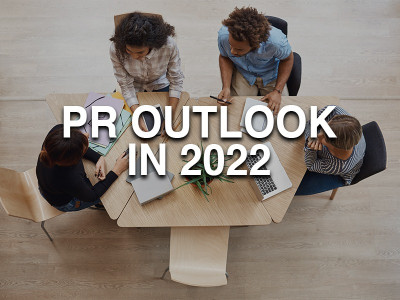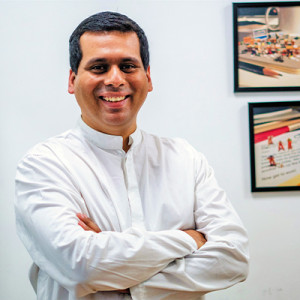How geared is the PR industry for the rollercoster ride ahead in 2022?
The Indian PR industry has been moving at a steady pace in the last few years, especially after some of the major global PR companies have set up their consultancies in India. While there are several estimates that are floating around about the size of the Indian PR industry, according to a reliable report, it is pegged at over Rs 2,000 crore and growing at about 12%. From legacy organisations to the newest start-ups, PR has become a trusted business partner to steer the company ahead. Let us look at what are some of the challenges that the PR industry will have to grapple with as we move into 2022.
ALSO READ: Communications became a strategic business driver in 2020: Prachi Singh, Yahoo
Business Growth
While agencies are witnessing some momentum, the growth journey will be challenging for every agency as the Covid situation is yet to stabilise. While clients will not easily shift from one agency to another, the growing start-up ecosystem will need more robust help of PR. Ever since the pandemic struck, some of the clients have also negotiated new commercial terms. This will lead to agencies hiring more people and investing more in training and technology adoption. The first quarter should give us a picture of how the industry will cope up and manage their growth. Agencies will have to bring in a very strong differentiation in their offerings and add value to the clients’ business to maintain a long-term relationship.
Content - a key driver
Content continues to remain the king and still drives PR to a large extent. With the increase in consumption of content, need for generating fresh and interesting content will be a challenge to connect and engage with your varied audience. So, to stand out of the clutter PR agencies will need to have a strong and creatively focussed content team, who will be able to deliver and narrate better stories through superior content by customising and delivering to the niche media – both online and offline.
Today, with the accelerated use of social media, both brands and agencies need to collaborate very closely on content and share interesting content to engage their audience as the dynamics of media have restricted and brought in a significant change in the consumption pattern as the time span available for today’s audience to browse the content is very less.
Attrition rate
This will keep hounding the industry. Talent churn will continue and the industry will continue to grapple with the quality of talent and attrition issues. This will happen for many reasons, starting from job satisfaction, growth in career to the pay scales that the industry has been offering. This will be a headache and a challenge for every agency as new and better growth opportunities are being provided by the start-ups and the desire to move to the client’s side will be a lucrative proposition for several professionals in the PR industry. This is one area that the agencies need to plug it by bringing in some innovative ideas at the HR level to motivate employees and engage with them on a continuous basis, while addressing their issues.
The right training
Continuous training is paramount when you are in the PR business. Most research reports show that education and training deliver good benefits, which include job satisfaction and better opportunity to grow with in the organisation. Agencies should also bring in innovation to train their employees. Recently, Adfactors, one of India’s leading PR consultancies, joined hands with Upgrad to get a deeper understanding of digital for their employees. The core programme was designed by experts from MICA, with additional modules created in house by their training and development leadership team. So, training is one key element that will be a key driver for agencies to motivate their employees and gain respect from their clients by continuously adding value to the client’s business.
Technology adoption in PR
The technological revolution will keep continuing and it will definitely have an impact on the PR industry. In the past, PR as an industry was reluctant to bring in changes and embrace technology as it had a direct effect on people losing jobs and bringing in redundancy. But now, PR industry has realised the importance of technology and is upgrading and upskilling technology capabilities. Even the attitude towards understanding technology has shifted and slowly they are getting accepted by most of them. Technology is not something new to the industry, but the willingness and adoption will be the key. Agencies offering and leveraging technology will surge ahead in the race as clients are demanding agencies to be more agile, especially when it comes to digital and the changing dynamics of the media landscape.
The future is going to be exciting and more challenging. While it may be a level playing field, ultimately those who are able tell their story well and leverage digital to the maximum will be in an advantageous position. Teams at agencies will have to be more agile as online reputation and influencer marketing will march ahead as brands are expecting quick turnaround and results.
Industry Speak
According to Vineet Handa, CEO Kaizzen & Chairperson North Chapter, PRCAI, one of the biggest challenges is the dearth of good people because of which the agencies will struggle in 2022. He further said, “It will become more challenging due to squeezing opportunities in media, which means to succeed we as an industry have to create new and innovative avenues to communicate with our target audience across industries. This will further put an additional emphasis on the right kind of talent – the one that is well versed with integrated communication and that understands and masters the traditional as well as the new media platforms including social platforms.”
Continuing, further he said that the second challenge is the shrinking of Print Media and opportunities in it and Online Media taking more relevance. “Thus, there is a great opportunity to create awareness of the information/ news consumption pattern across different stakeholder groups,” he added.
The third challenge is content. All the three challenges are somewhere interlinked and the PR industry needs to find the right skill sets to deliver all three areas. Therefore, an integrated agency that can provide innovative content is more likely to succeed.
Handa foresees 2022 to be one of the fastest-growing years for the industry and thus, these challenges become even more relevant.
Bhaskar Majumdar, Head - Corporate Affairs, Communication, CSR & Digital, Egis India, remarked that #COVID has fast forwarded the digital transformation in India. Buoyed by the digital transformation that is currently happening, the growing need of the market has put integrated strategic approach to PR, at the very top of the pyramid. The world is now moving from ‘offline’ to ‘online’ and the spotlight will be on all things digital using virtual tools to engage with all stakeholders. The focus would be to deliver content-driven campaigns that are both meaningful and engaging using both offline and online tools and with a purpose clearly reflecting in the campaigns. “Given this dominant scenario, the roles and responsibilities of public relations and communications agencies and consultants are also undergoing sea-changes. More and more agencies are now offering strategic services and are building competencies for new age story telling. The need for building adequate capacities and offering services which are more suited to the current times will be critical for agencies going forward,” he opined.
Sukanya Chakraborty, Senior VP & Head – Corporate Communications & CSR, VFS Global, pointed out, “We have seen the contours of PR and communications getting redefined over the last two years, with real-time monitoring, listening across touchpoints, insights, and the use of data. While these trends would strengthen as deeper relationships and personalized experiences become key going forward, measuring communication impacts would be a strong business growth metric. This would prompt more brands to align their key messages to current issues.”
Even as transparency and culture awareness remain imperative, communication would become more agile in dealing with uncertainties and catering to the stakeholders’ ecosystem. In terms of employer branding, diversity and inclusion would be the key messaging pillar. The major shift observed since the pandemic would continue to influence reputation dashboards in 2022 as focus on core values and social responsibility dominate. According to Chakraborty, “The path ahead would be to find the right balance between people, profit, and the environment – elevation of a brand from a business organization to a contributor to society.”
The year 2021 witnessed funding of more than $38 billion across 2K+ investment rounds. Aman Dhall, Founder, Comms Credible, noted that there are 50,000+ registered start-ups as per government figures. He, however, estimated this number to be much higher as not every start-up registers itself on the government portal up first – “we are yet to do as well,” he added.
Given the opportunities galore for the PR ecosystem, the talent pool is extremely limited. While there is a lot of business to be made for the PR/ Communications consultancies, talent retention, workload management and training younger professionals quickly and simultaneously amidst the scale up would be the biggest challenge for the industry in the year ahead.
“I see the industry growing quite rapidly and considerably in 2022, even if a third wave occurs, as everyone has learned how to work remotely. Businesses know where to cut costs and where to sustain spends. I see a lot of focus on what PR earns for business (measurements from both revenue and brand growth perspective or crisis management). Do-it-yourself platforms will create their own niche; however, their growth will depend on the talent pool at the corporate level, who are usually busier with stakeholder management.”
He further said that PR agencies have started to rebrand themselves as communication technology firms, an indication of how companies are preparing themselves to tap on funding available for B2B space in the start-up ecosystem.
Amid all the uncertainty, keeping up with the changing circumstances and evolving expectations, Asif Upadhye, Director, SPRD, saw the PR agencies having a tough time cracking the perfect campaigns that would be crowd pullers and cement the existing brand loyalty. According to him, “In our industry, one of the biggest challenges, however, has always been building a sustainable network of collaborations – be it in terms of building a media universe, or in terms of finding the right speaker opportunities.”
Technology has majorly altered the way we work today, acting as a catalyst in decreasing the turn-around time for delivering information, but optimising the overall consumer experience through a diverse plethora of mediums. While social media became a popular medium for brands to engage with their audiences, we also experienced a rise in the ‘boycott culture’, which added more pressure on the PR professionals to amplify their efforts in terms of online reputation management and overall brand positioning.
Another trend that has been on the rise is influencer marketing, where netizens prefer the brand messaging coming in from the people that they look up to, instead of pre-established celebrities. “And with the recent developments, we are back to the conundrum of whether to encourage hybrid working or move back to the era of remote working. However, storytelling over story-selling is the key! This year, too, content marketing is by default going to be a powerful vertical that will help strengthen the bond between brands and consumers,” Upadhye noted.
Sharing his perspective, Aman Gupta, Managing Partner, SPAG, said, “Over the last two years, the industry has evolved in a big way – remote working, digital campaigns, online media dominance – the communications industry has adapted to this already. However, in 2022, tech will lead the way more than ever. There is an in and out of COVID restrictions across the world, which means that even hybrid work systems are temporary. This will lead to innovative digital campaigns that focus on experience and interactivity. The pandemic fatigue will be a challenge nonetheless, but will also present an opportunity for more creativity and innovation in the communications space.”










Share
Facebook
YouTube
Tweet
Twitter
LinkedIn